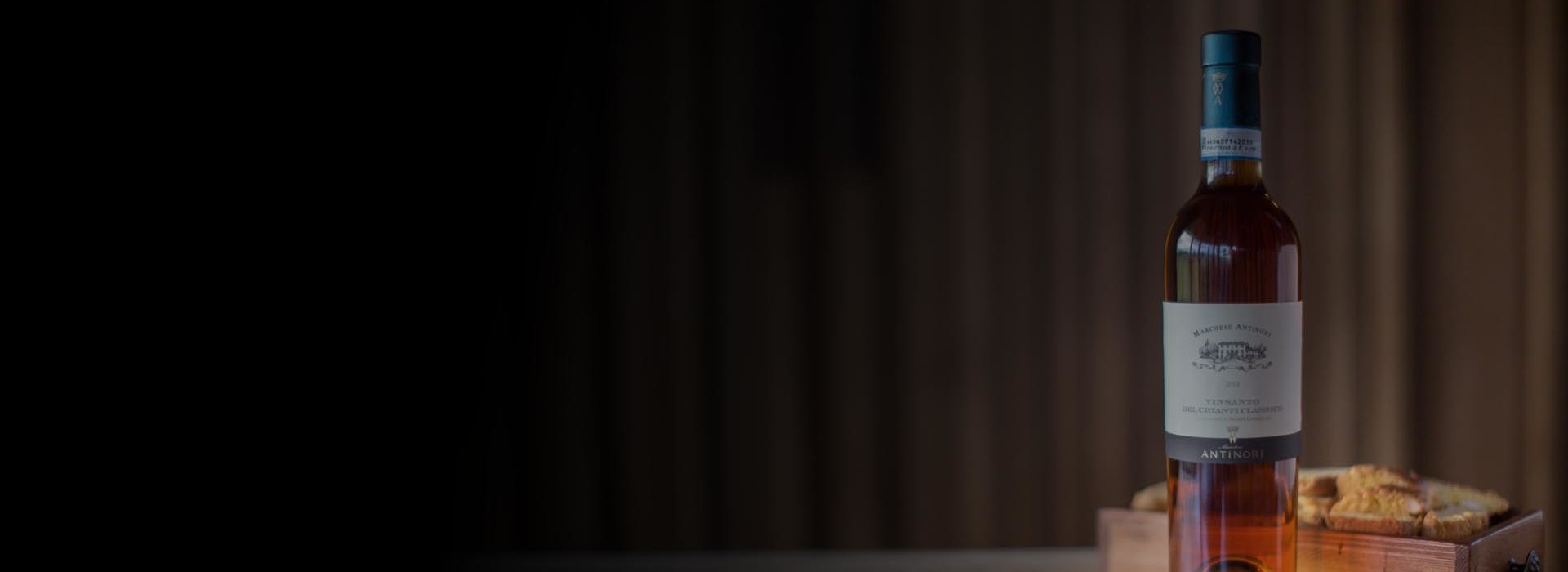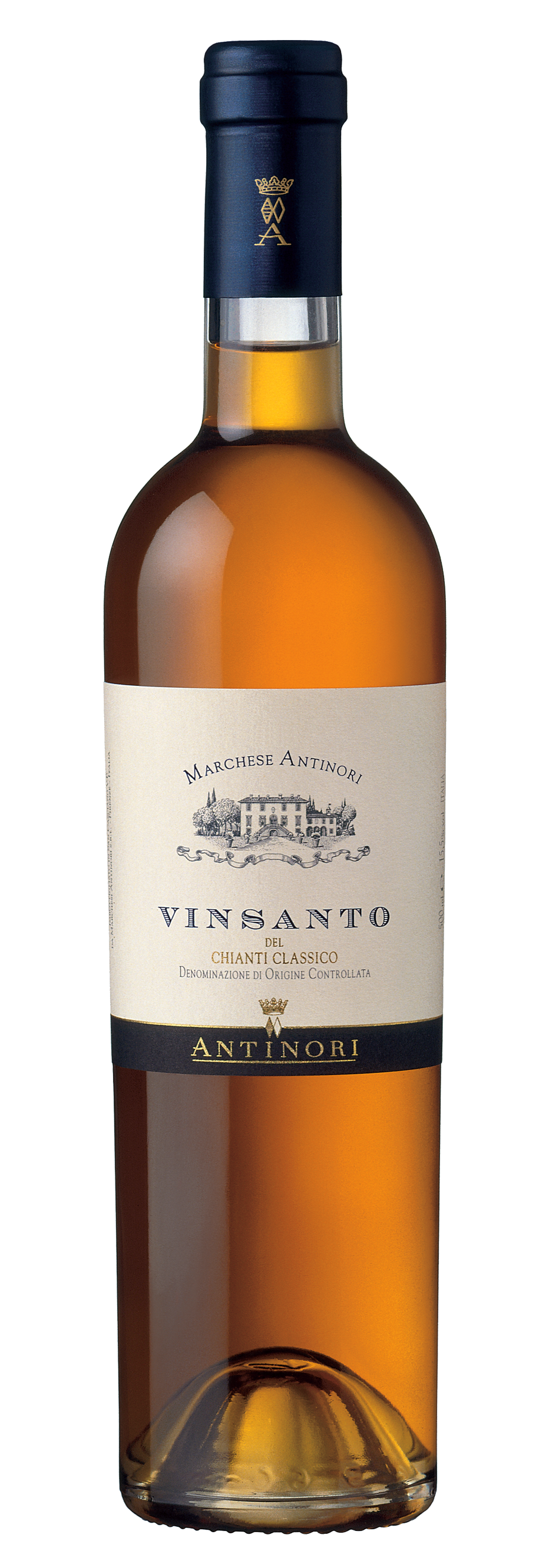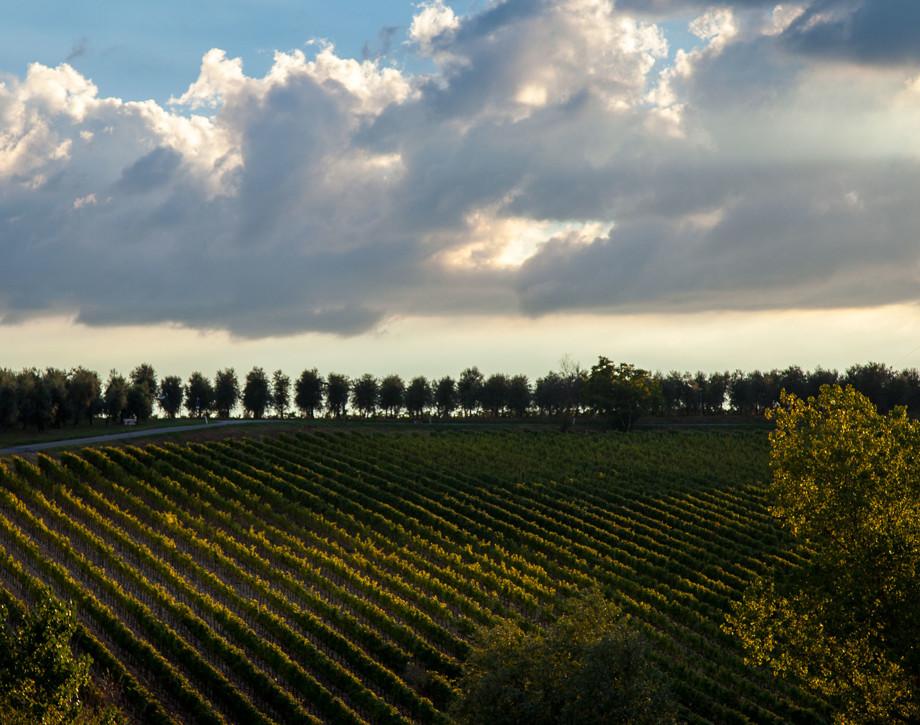Vinsanto Marchese Antinori

Climate
Autumn of 2009 and winter of 2010 were characterized by abundant rainfall and cold temperatures; snow fell towards the end of the year and then again, with a certain frequency, up until mid-March. This weather pattern favored a useful period of repose for the vines which, along with regular rainfall in early spring, led to a notably late bud burst compared to normal seasonal averages. The months of April, May, and June, a critical period for the growth and development of the plants, was marked by positive precipitations accompanied by below average temperatures, phenomenon which led to a certain delay in the vine cycle in all of the varieties which were cultivated. Summer weather began in July with heat and a total absence of rain, assisting an excellent development of the grape bunches and a decisive recovery in vine development. Temperatures fell in late July and during the first half of August, leading to a slow and very regular period of ripening. The grapes were picked during the second half of September under climatic conditions which were ideal for the quality of the wines.
Vinification
The grapes, grown exclusively on Antinori estates located in the Chianti Classico production zone, were carefully picked and were selected for good levels of acidity and sugar content. The crop was very healthy, an indispensable condition for the successive phase of drying; once picked into small packing cases, the grape bunches were then placed carefully on the reed mats of the drying area of the Tignanello estate. They were left to dry here until December 20th and then softly pressed to conserve all of their flavor characteristics and aromas. The must then went into a series of small barrels varying in size from 50 to 200 liters and coopered from different types of wood. There they went through the long, slow fermentation typical of Vinsanto. The wine aged in wood for three years and was then assembled in order to be subsequently bottled.
Historical data
The production of Vinsanto in Tuscany goes all the way back to the Middle Ages and the wine is considered a true regional specialty; the Antinori family has always produced it. The first vintage of the Vinsanto Tenute Marchese Antinori (a “natural” Vinsanto, not a fortified wine with alcohol added) was the 1987.
Tasting Notes
Amber in color with golden highlights, the wine shows a complex and vinous nose with aromas of fruit under spirits, honey, chestnuts, candied fruit, and nuts; notes of dried flowers are also well present and contribute to giving the wine freshness and fragrance. The flavors are dense on the palate, pleasurably crisp and savory and ample in their body, a prelude to the full and intensely persistent finish and aftertaste.
Awards
Wine Spectator 92/100 USA

Vinsanto
Vinsanto production in Tuscany and in the Chianti Classico region dates back to the Middle Ages. Observing traditional methods and strict production regulations, Vinsanto Tenute Marchese Antinori is produced from selected Trebbiano and Malvasia grapes that are left to dry in a completely natural process requiring time and patience. The resulting wine is intense and pleasing for its generous aromas and soft palate.

Climate
Autumn of 2009 and winter of 2010 were characterized by abundant rainfall and cold temperatures; snow fell towards the end of the year and then again, with a certain frequency, up until mid-March. This weather pattern favored a useful period of repose for the vines which, along with regular rainfall in early spring, led to a notably late bud burst compared to normal seasonal averages. The months of April, May, and June, a critical period for the growth and development of the plants, was marked by positive precipitations accompanied by below average temperatures, phenomenon which led to a certain delay in the vine cycle in all of the varieties which were cultivated. Summer weather began in July with heat and a total absence of rain, assisting an excellent development of the grape bunches and a decisive recovery in vine development. Temperatures fell in late July and during the first half of August, leading to a slow and very regular period of ripening. The grapes were picked during the second half of September under climatic conditions which were ideal for the quality of the wines.
Vinification
The grapes, grown exclusively on Antinori estates located in the Chianti Classico production zone, were carefully picked and were selected for good levels of acidity and sugar content. The crop was very healthy, an indispensable condition for the successive phase of drying; once picked into small packing cases, the grape bunches were then placed carefully on the reed mats of the drying area of the Tignanello estate. They were left to dry here until December 20th and then softly pressed to conserve all of their flavor characteristics and aromas. The must then went into a series of small barrels varying in size from 50 to 200 liters and coopered from different types of wood. There they went through the long, slow fermentation typical of Vinsanto. The wine aged in wood for three years and was then assembled in order to be subsequently bottled.
Historical data
The production of Vinsanto in Tuscany goes all the way back to the Middle Ages and the wine is considered a true regional specialty; the Antinori family has always produced it. The first vintage of the Vinsanto Tenute Marchese Antinori (a “natural” Vinsanto, not a fortified wine with alcohol added) was the 1987.
Tasting Notes
Amber in color with golden highlights, the wine shows a complex and vinous nose with aromas of fruit under spirits, honey, chestnuts, candied fruit, and nuts; notes of dried flowers are also well present and contribute to giving the wine freshness and fragrance. The flavors are dense on the palate, pleasurably crisp and savory and ample in their body, a prelude to the full and intensely persistent finish and aftertaste.
Awards
Wine Spectator 92/100 USA

The Specialties Of The Chianti Region
Chianti Classico is the heart of Tuscany not only from a geographical perspective but also due to its historical and cultural importance, its traditions and for its strikingly beautiful territory. Chianti Classico is home to Marchesi Antinori’s historic estates, a family of winemakers since 1385 who have always been passionate about their ancestral territory. The specialty products produced by Antinori, brandy, grappa, Vinsanto, extra virgin olive oil and vinegar, are all remarkable tributes to Chianti Classico’s rich, generous countryside and its authentic production perfected through centuries of agricultural and viticultural traditions.
















